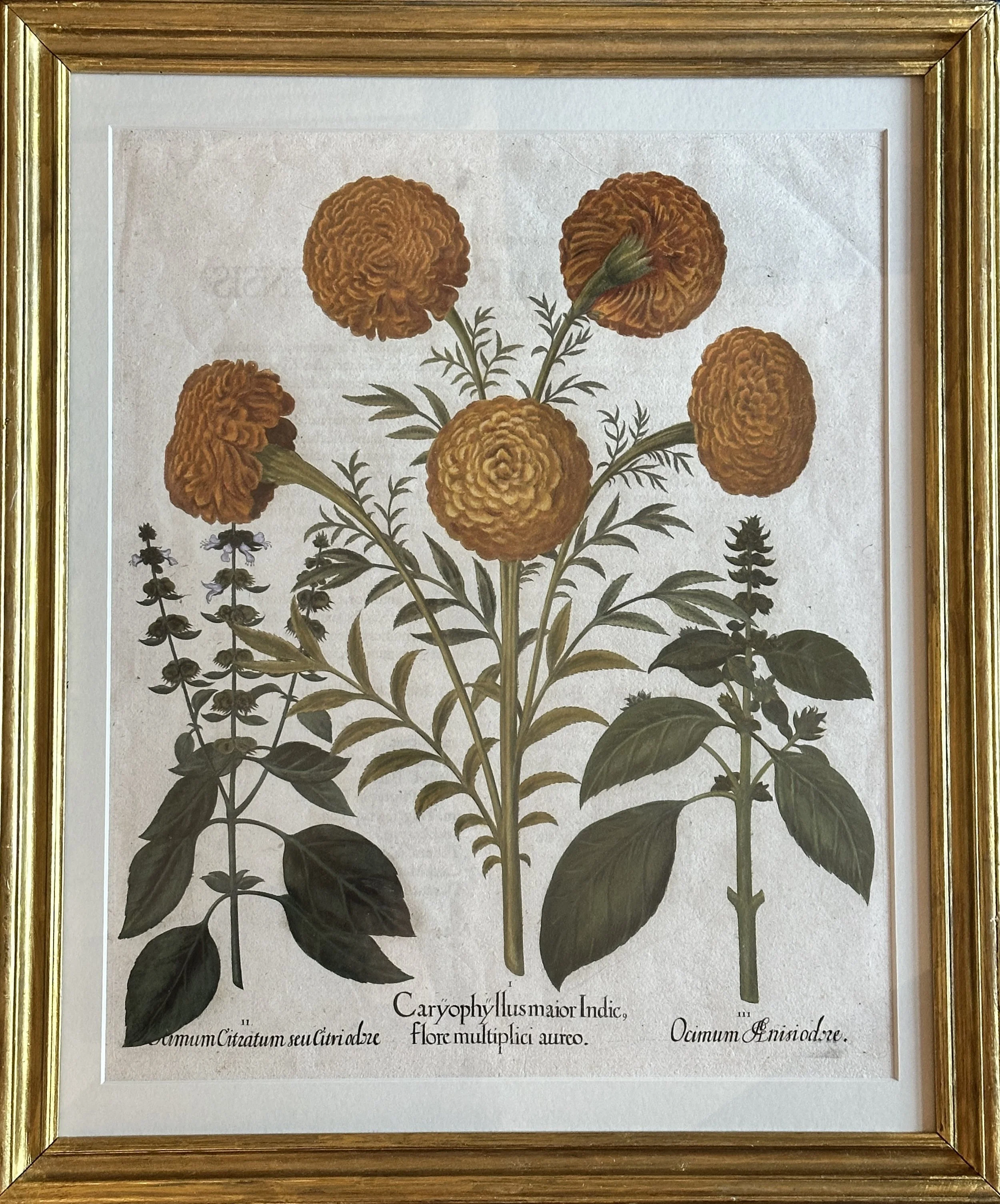Caryophyllus major indie, Basil Besler
This folio botanical engraving is from Basilius Besler's rare and highly valued work Hortus Eystettensis. It is from the third edition, published in 1713 in Nuremberg and Eichstatt.
Bishop-prince Johann Konrad von Gemmingen created a magnificent garden to praise God and celebrate the diversity of creation. In the early 1600s, the bishop-prince commissioned Basilius Besler to create a catalogue of his garden. Besler’s work, which depicted over 1100 specimens, is still widely considered one of the best botanical works ever created. Most of the plants depicted were drawn at their actual size. The first edition of the work was printed in 1613 and consisted of only about 300 copies.
Dimensions
~ 17 1/2" by 20"
This folio botanical engraving is from Basilius Besler's rare and highly valued work Hortus Eystettensis. It is from the third edition, published in 1713 in Nuremberg and Eichstatt.
Bishop-prince Johann Konrad von Gemmingen created a magnificent garden to praise God and celebrate the diversity of creation. In the early 1600s, the bishop-prince commissioned Basilius Besler to create a catalogue of his garden. Besler’s work, which depicted over 1100 specimens, is still widely considered one of the best botanical works ever created. Most of the plants depicted were drawn at their actual size. The first edition of the work was printed in 1613 and consisted of only about 300 copies.
Dimensions
~ 17 1/2" by 20"
This folio botanical engraving is from Basilius Besler's rare and highly valued work Hortus Eystettensis. It is from the third edition, published in 1713 in Nuremberg and Eichstatt.
Bishop-prince Johann Konrad von Gemmingen created a magnificent garden to praise God and celebrate the diversity of creation. In the early 1600s, the bishop-prince commissioned Basilius Besler to create a catalogue of his garden. Besler’s work, which depicted over 1100 specimens, is still widely considered one of the best botanical works ever created. Most of the plants depicted were drawn at their actual size. The first edition of the work was printed in 1613 and consisted of only about 300 copies.
Dimensions
~ 17 1/2" by 20"

